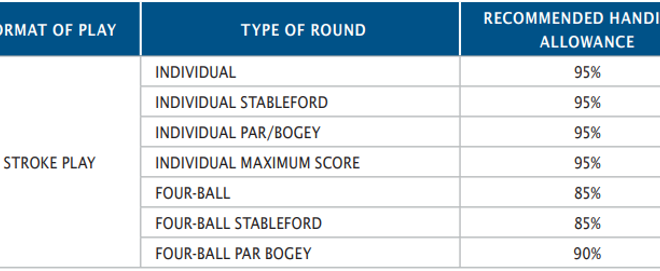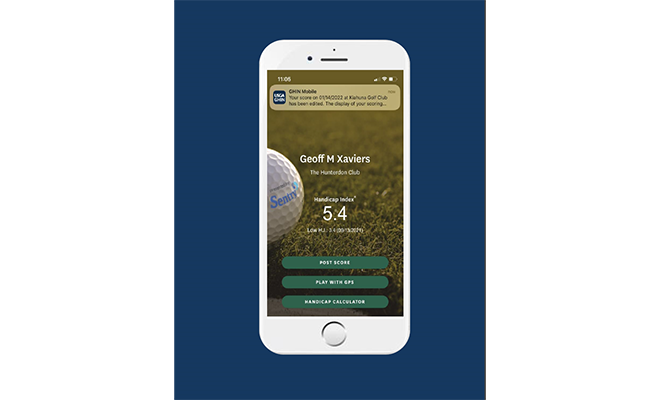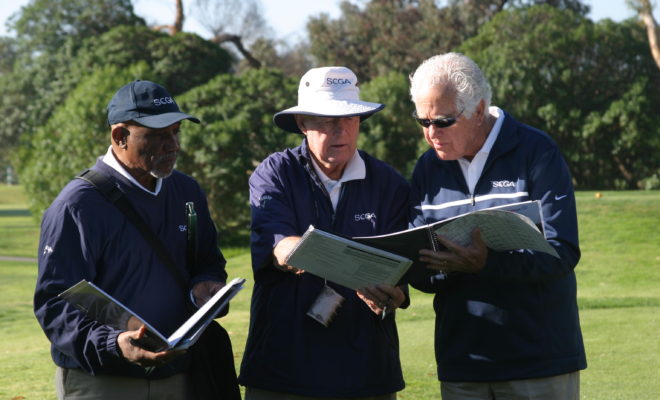Handicap Allowances

There is often anticipation in the air as the date for the next handicap competition at a club approaches. Participants want to know what handicap value will be used in the competition. In general, the group running the competition should define the terms of the competition so that participants know the ground rules. Yet sometimes a question arises, such as when a participant knows their Handicap Index® converts to a specific Course Handicap™ (or they look it up on a calculator, like those provided with GHIN®) and the scorecard for the competition has a different value listed. “What gives?” is often the first thought. Often, the Playing Handicap™ utilized is impacted by something called a handicap allowance.
A handicap allowance is the percentage of a Course Handicap recommended to create equity based on the format of play. Given that higher-handicap players typically have more variance in their scores and an increased potential to shoot lower net scores, when full Course Handicaps are used in certain formats, players with lower Course Handicaps are generally at a disadvantage.
The significant list of recommended handicap allowances for a variety of formats in Appendix C of the Rules of Handicapping are important in maximizing equity in competition. As an example, for four-ball (better ball) stroke play, the recommended allowance is to use 85 percent of the Course Handicap to determine the Playing Handicap™ for the competition.
Some of the allowances are different in the World Handicap System™ (WHS™) than they were previously. Improved data sets from around the world, along with considering formula changes in WHS, positioned better allowances to be recommended.
One allowance change that has resulted in several inquiries is in relation to the four-ball (better ball) stroke play noted earlier. In this format, the recommended allowance went from 90 percent for men and 95 percent for women to 85 percent for all players in WHS.
One of the recommendations under the USGA Handicap System previously in place was to try to keep partners’ Course Handicaps™ to an 8-stroke or less difference, with an additional 10 percent reduction for both partners if the 8-stroke difference could not be avoided. With the current recommended handicap allowance of 85 percent, the 8-stroke limit between partners was not found to be needed to produce equity among teams of various handicap levels.
As a result, for this format, it is also no longer recommended to assign an additional reduction if partners have an 8-stroke or greater difference in their Playing Handicaps. Two partners who might not be of similar golf skill can team together and not feel like they are being penalized while the competition retains its equity.
Recognizing that there is a lot of math involved in handicapping, handicap allowances are in place to provide better equity. The next time a player believes the handicap should be a 22 on the scorecard but is listed as a 19, it is possible that allowances have been utilized to benefit all. Please consider this before contemplating whether to tackle the tournament administrator under the assumption that the listed handicap is wrong.











